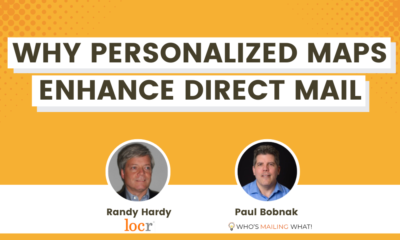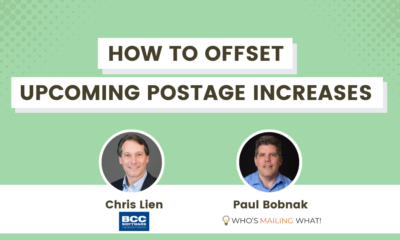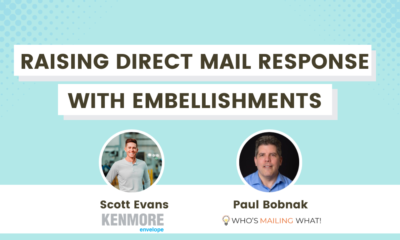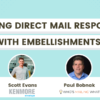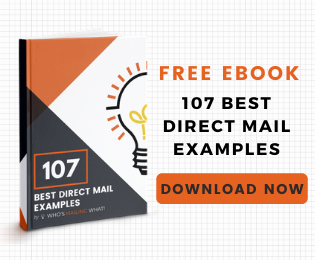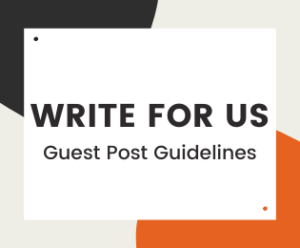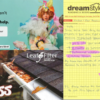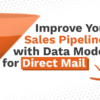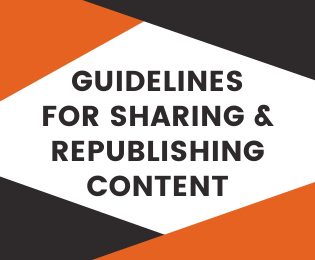MEET THE MAILERS
Meet the Mailers: Adjusting Production to a New Normal
In this episode, we chatted with The Lukens Company (TLC) about how the company works with clients to save money in “the new normal”.
In this episode, I chatted with Traci Cacioppo, vice president of production for The Lukens Company (TLC). Headquartered in Arlington, VA, Lukens is a full-service marketing agency that provides direct response, donor development, and fundraising strategies to nonprofits, cultural institutions, advocacy groups, and faith-based organizations.
A self-described “production nerd”, Traci shared how the company works with clients to save money in “the new normal”.
As Traci said:
So Informed Delivery is really their best option right now, it’s the easiest, it takes very little effort … this past year, we saved our clients over $450,000 in postage by utilizing this.
 Traci Cacioppo
Traci Cacioppo
Vice President, Production
The Lukens Company (TLC)
Among the topics we covered:
- Traci’s background and current role in direct mail production
- The types of organizations the company works with
- Ideas for keeping costs down
- How nonprofits can build relationships with donors
- Trends in direct mail marketing
Here are some questions and answers from our conversation (edited for clarity and space):
- Let’s talk about The Lukens Company and that 30+ years of helping non-profits fulfill their missions. For some background, can you talk about the types of organizations that Lukens works with?
Yeah, we work with a wide variety of organizations. TLC works with national nonprofits arts and cultural programs on both a regional and national level. We also have advocacy and political organizations, just to name a few of them. We actually started in 1986 with just three people focusing on fundraising and have grown into a full-service agency providing data-driven integrated programs, omnichannel direct marketing response, and survey research.
So we kind of have the whole package where we really want to utilize all of the services available to people today. Our mission: we help cause-oriented organizations make the world better by empowering the people who support them. So, that’s what we do.
- Right, then you break that down, you call them practices.
We call them …we have different verticals if you will, that’s really what we come down to. We have our national nonprofit vertical. We have our arts and cultural vertical, we have a political vertical, we have our advocacy. We’re also looking into veteran-type of organizations for the police or the veteran/Vietnam veterans or any other organization that helps the military and fire departments and things like that and essentially trying to find the right fit for us and for the client.
- OK, and these segments, I’m assuming that they’re all served with acquisition campaigns, but what other types of campaigns do you work with?
So most of the plans have acquisition, annual fund campaigns, mid-level and sustainable programs, membership programs, capital campaigns, renewal campaigns. We do voter mail. So essentially, we really look at the client’s work and find what best programs work for them. And so it’s really a full package. It’s not just acquisition, it’s not just donor renewal. It’s a whole package to hit the right audience at the right time with the right package and messaging.
- So we know that right now we’re in a good economy, but there are challenges out there for producing a direct mail campaign. What are your thoughts about the state of production in mail as we roll through the rest of the year?
People have said we’re in our new normal, which is kind of where we’re at. The pandemic has kind of subsided, all the crazy pricing structures have stabilized to a degree, schedulings are pretty much back to normal. What’s getting hard is postage for our clients, they just keep going up, and they’re going up twice a year. At the beginning of the year, it’s usually a two percent increase. In July, it’s gonna be around a seven or eight percent increase, and the following January … So ways for us to mitigate some of the issues with that, we always have to find ways to optimize our data. We utilize multichannel programs with digital marketing, text messaging, and things like that.
- One thing I want to talk about is what’s really on the minds of anybody involved in direct mail is literally postage. It’s the biggest factor in the cost of direct mail campaigns. So what kinds of steps can be taken to take some of the sting out of these constant increases?
The biggest thing is taking advantage of the USPS promotions. We’ve been doing this as standard practice for many years now with our clients, such as Informed Delivery, [and] the tactile program. So Informed Delivery is really their best option right now, it’s the easiest, it takes very little effort. We also over the years … this past year, we saved our clients over $450,000 in postage by utilizing this.
And then tactile sensory promotion is another one where you can enhance your package by using glass paper or metallic ink or embossing or something like that help mitigate that you get 5% back if you are qualified and are approved by the post office.
The other one that’s really good, especially in the political year this year, is the growth incentive with that 30% credit for mailing over the volume from the year before. This is a big election year and it makes sense for definitely large organizations that will increase their mailings this year because of the election to utilize that growth incentive. And then the BRM promotion is really used for large mailers. Some of our smaller clients don’t utilize that, but those are the things that we really take into consideration when it comes down to mitigating the postage cost. But also the other way is to really look at your data and clean your data, find ways other than just your standard NCOA to fix your data. Make sure you’re hitting the right audiences, and move forward.
- Yeah, exactly. I want to maybe get into some more of that point in a moment, but generally talking about nonprofits and all the different jobs that they have, with whatever channels they’re using, but how should organizations really address their stewardship and outreach strategies?
Really, what it comes down to is building an authentic, transparent relationship with their donors in all communities that they offer. Build credibility by reporting back to the donors on the successes that they’ve had and that they’ve helped the organizations achieve. Thank their donors timely and often. Sometimes, that tends to get put on the back burner, especially when budgets are an issue. Share results, success stories, and any current news that they have, and also bring them along for the journey, make sure they’re included in it and that’s really the best way to do that.
- So, we live in an age of email campaigns and the web, apps, peer-to-peer … all these channels that are becoming more and more commonplace for engaging donors and members. How is it that with all that and all these supposed cost advantages with them that direct mail still remains a vital channel for supporting organizations and their missions?
Direct mail will never die. That’s my firm belief; all the statistics and the reporting that you see show that direct mail really drives fundraising, and then it even enhances the digital campaigns. You can’t just live solely on digital and electronic communications. It’s not the way it is, and believe it or not, the Gen Zs and even some millennials like direct mail. It’s kind of their hot thing now because they’re so used to the electronic messaging that they like to get something in their hands.
The other thing that it proves is that direct mail is a physical and tangible piece of paper or envelope or so forth. Studies have shown that having the direct mail piece delivered is in a person’s hand much longer, almost like two weeks longer than an email campaign because you’ve got 30 seconds to get their attention and then they’re gone. But with a direct mail piece, they get it at the mailbox. They bring it in the house. They put it on the counter then they go look at it again. So it’s definitely something that people tend to respond to more and a long time ago people told me that direct mail is recession-proof, and it really is because people still look at the mail. It’s still there, still a viable way of fundraising and we’ve come up with some new and creative ways to engage customers using QR codes on direct mail pieces and things like that. So it definitely is very vital to the organizations to raise funds.
- What kind of trends do you see for direct mail fundraising in the next year or past that?
The trends here is people being proactive and utilizing data and the emerging technologies that are offered today. Doing that essentially allows them to mail more effectively in both cost and response. I suppose targeting and selecting internal audiences and utilizing newer co-op modeling offerings and so forth as well as enhancing personalization strategies.
That’s the one area that it is really where somebody can elevate their fundraising program by using digital lasering and four colors so that you can just swap out a photograph and really mail into your audiences. If it’s a Spanish audience versus an English, a male/female/young/old. You can really do that on the fly if you get your data organized, so it’s really data-driven in that sense.
And then utilizing the new printing techniques to enhance that even more. Organizations are increasingly collecting firsthand, opt-in permissions, surveys, and so forth, petitions, all of those things that will also help them look at their programs, and then they also have more insight into personalizing communication strategies and messaging through different channels and obviously strengthening their donor relationships. It’s really about personalization and talking to the person instead of a group. How can you tell this person that you know what they like and that they’re part of their community?
Here is our conversation (with all questions and answers). We’ve added timecodes for your convenience.
Thank you very much, Traci, for sharing your perspective and your expertise! To learn more about The Lukens Company, visit their website at www.TheLukensCompany.com.
Your comments and ideas are very important to us in making your Who’s Mailing What! experience even better for you. Through these engaging talks, we hope you’ll take away practical tips, insights, and personal stories to inspire and build your own success.
If you have any feedback — or are interested in sharing your expertise and viewpoint with our wide and diverse audience on “Meet the Mailers” — please reach out to me. I’d love to hear from you!









